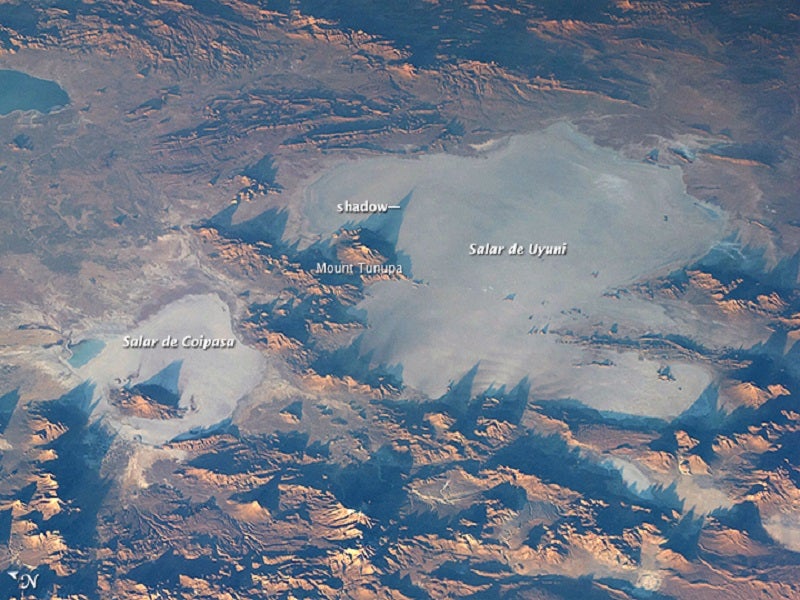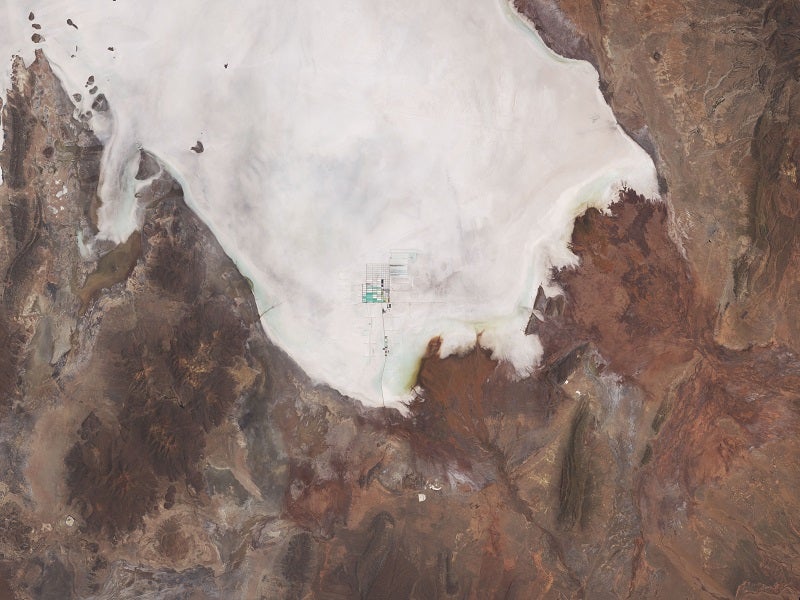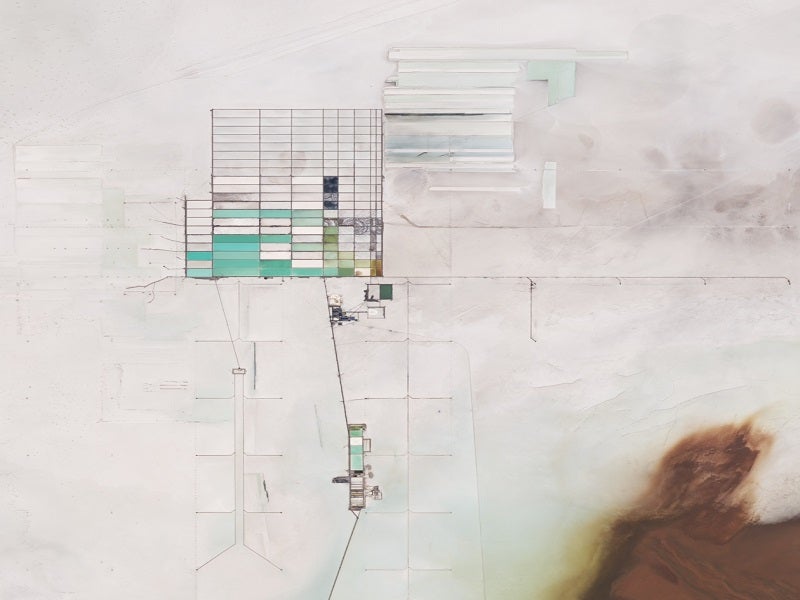The Salar de Uyuni salt flat in south-western Bolivia is the largest salt flat in the world with the salt crust extending up to 10,000km2. It also serves as a major transport route across the Altiplano plateau.
The salt flat is estimated to contain more than half of the world’s lithium reserves, as claimed by the government of Bolivia. Mining and harvesting of the resource, however, has been limited due to political constraints and economic challenges.
Bolivia is yet to make a major leap in the development and extraction of its valuable lithium reserves for the global market.
Location and the formation of Salar de Uyuni
The Salar de Uyuni is located within the Altiplano plateau in the province of Daniel Campos, in south-west Bolivia. The salar (salt flat) lies near the crest of the Andes at an elevation of 3,656m above sea level. Transformation of the prehistoric Lago Minchin Lake approximately 25 million years ago during the uplifting of the Andes led to the formation of the deposit.
The climate got drier and the lake began to evaporate approximately 40,000 years ago. High salinity levels due to evaporation created a thick crust of salt, while the water underneath the crust continued to evaporate at ten times the rate of precipitation.
The evaporation process stopped approximately 10,000 years ago resulting in the formation of the Salar de Uyuni as it is today. The evaporation also resulted in the formation of the Lagos Poopo and Uru Uru along with the smaller Salar de Coipasa salt flats.
Salar de Uyuni geology and reserves
Successive layers of salt and clay have been revealed by drilling in the Salar de Uyuni at depths of up to 120m. Layers of salt are sandwiched between sedimentary deposits reaching depths of 10m in the centre of the flat. An estimated ten billion tonnes of salt is contained in the Salar de Uyuni.
The known mineralisation in the Salar de Uyuni includes majority salt (NaCl) deposits, sub-economic to economic brines, and borate. The salt crust is highly porous extending up to 10ft in thickness and composed largely of halite and gypsum.
Beneath the salt flat is a blue-green brine, which is estimated to hold approximately 5.4 million tonnes of lithium reserves.
Mining activities in Bolivia
Private investment mining began early in the 1980s when Bolivia began opening lands held by the state-owned Corporacion Minera de Bolivia, (COMIBOL) to joint venture or leasing contracts. COMIBOL could form joint ventures with foreign investors with 55%-45% share, while the state owned the majority share.
Some of the mines and deposits in the region include Colchani Mine, Salmueras del Salar de Uyuni- brine, Salmuera del Rio Grande, Boratera Pampa (Llipi-Llipi), Salinas de Garci Mendoza District and San Cristobal District.
When Evo Morales became President in 2006, the government undertook nationalisation of mines and smelter plants. In May 2014, a new mining law was signed by President Morales prohibiting contracts between co-operatives and private investors. As per the new law, mining concessions could no longer be issued and COMIBOL would be part of all mining activities and developments via contract whether it be a local or foreign investor.
In December 2018, the state-owned Bolivian Lithium Deposits (YLB) and the German ACI Systems created the YLB-ACISA-EM joint venture for the development of lithium mining and processing infrastructures at Salar de Uyuni. The government of Bolivia reportedly repealed the joint venture agreement in November 2019. ACI Systems has vowed to clarify the situation with their Bolivian partners and continue working on the project as formerly agreed.
YLB also formed a joint venture with China’s Xinjiang TBEA Group in February 2019 to develop lithium mines in Coipasa and Pastos Grandes salt flats at a cost of $2.3bn.
Lithium processing
The Salar de Uyuni is located at a high elevation compared to other salt lakes around the world. The region is also relatively rainy and cold, which makes standard lithium extraction process unreliable for the long term. The brine in Uyuni also has unusually high concentrations of magnesium (Mg) and potassium (K), which makes the process more expensive.
Previous mining activities used extraction wells to pump the lithium-rich brine from beneath the surface, which was then transported to rectangular evaporation pools with plastic liners. On the pools, lithium, salt, and other substances are separated through natural evaporation for approximately six months.
A lithium production test plant named Llipi pilot plant was opened in the south-eastern tip of the Salar de Uyuni in 2013. Due to high production costs and lack of infrastructure the plant has not seen much development over the years.





